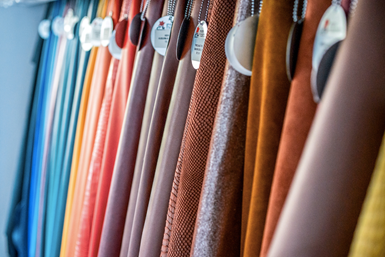Leather vs. Virus: Italian Tanner Creates New Material Treatment
Italian tanning company develops antiviral treatment for leather
#interior
Gruppo Mastrotto, a large supplier of cowhide products for a variety of industries including automotive, has announced the development of a propriety technology that it said eliminates 99.9% of the viruses and bacteria that might be found on leather.
(Large? More than 2,400 employees; 18 factories; >435 million € turnover.)

Gruppo Mastrotto said it has developed a treatment for leather that provides antibacterial and antiviral properties. (Image: Gruppo Mastrotto)
In addition to which, it acts as a surface barrier that “prevents the replication of pathogens that may come into contact with the leather.”
Meaning that it maintains its capability after several uses, though the company didn’t say how long the surface barrier lasts.
Chiara Mastrotto, president of Gruppo Mastrotto, said, “This fundamental innovation, designed and developed entirely within the company, represents for us the culmination of significant efforts and investments made in the Research and Development field.”
Presumably the people who work in the company’s labs have been previously been working on colors and surface treatments more than on health-related concerns.
Post-COVID
Although antiviral leather has an immediate application due to COVID-19, it is worth noting that one of the considerations that interior designers have had over the past few years is designing interiors for shared vehicles that are not only easy to clean of dirt and debris, but that would have the antiviral and antibacterial properties that Gruppo Mastrotto said it has developed to treat leather.
This treatment will undoubtedly have applicability from this point going forward for both shared vehicles as well as those individually owned.
RELATED CONTENT
-
Engineering the 2017 Lincoln Continental
Mike Celentino, is chief engineer for the 2017 Lincoln Continental.
-
GM Seeks to Avert U.S. Plant Shutdowns Linked to Supplier Bankruptcy
General Motors Co. says it hopes to claim equipment and inventory from a bankrupt interior trim supplier to avoid being forced to idle all 19 of its U.S. assembly plants.
-
Autoline After Hours: The 2020 Cadillac XT6
Cadillac currently has three non-car vehicles in its lineup, the imposing and possibly venerable Escalade, the XT5, which started its existence as the SRX and is now crushing it in the market, and the most recent, the compact XT4, which is in a sweet spot for those looking to get into the premium portion of the market.


.jpg;width=70;height=70;mode=crop)